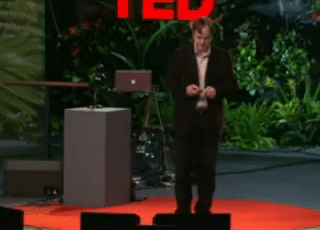Wireless Data from Every Light Bulb!
What could be better for reducing clutter in your smart home? It may sound like a thing of fantasy, but Harald Haas’s recent presentation at the University of Edinburgh may indicate otherwise.
Whilst wireless is a technology found in most smart homes and one that is often integral for most home automation and home control scenarios, this normally requires the presence of a wireless router. Haas points out that this carries with it numerous limitations….
1) Capacity – we use radio waves to transmit data – these are limited and nearing capacity. Interference is also a common problem.
2) Efficiency – some base units are only 5% efficient – much of the energy is used to keeping the base stations cool
3) Availability – there are limitations, for instance, they can interfere with airplanes and hospital equipment
4) Security – easy interference
So why would using light bulbs be better?
Light bulbs use the visible light section of the electromagnetic spectrum. This is over 10000 time larger than the radio wave section. Moreover, we already have 14 billion lightbulbs installed world wide, so the infrastructure is already in place – there’s no need to erect masts.
Through the use of LED lightbulbs, which can be modulated at high speed, data can be transmitted. The technology is called SIMS OFDM.
Haas suggests that in future smartphones maybe able to receive data through cameras or photo receptor. In theory this technology could enable you to have perfect high speed wireless throughout your smart home. Whilst lights will have to be on for this technology to work, it could be dimmed down to a level that could not be seen by the human eye.
For those of us who are security conscious and don’t want people hacking into our home control systems, the use of light means that other’s can’t access the system unless can see the light, and we all know that light doesn’t travel through walls!
You can watch Hass’s presentation here: http://www.ted.com/talks/harald_haas_wireless_data_from_every_light_bulb.html

